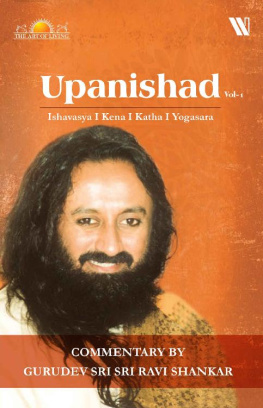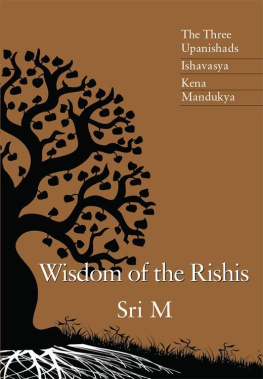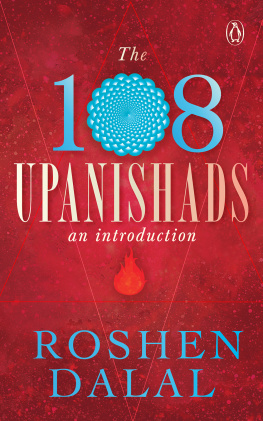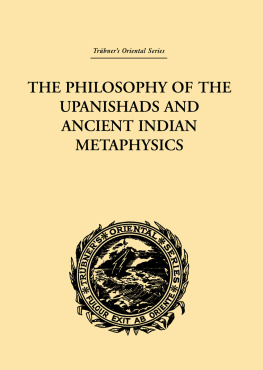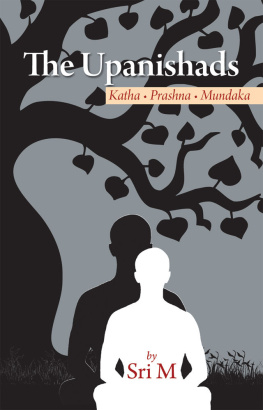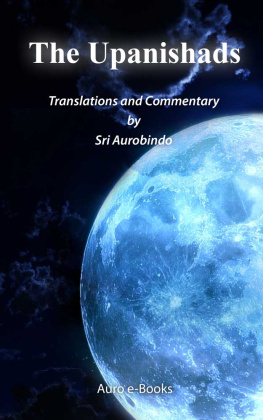The
Smokeless Fire
Unravelling the secrets of
Isha, Kena & Katha Upanishada

Uttara Nerurkar
B.Tech., Indian Institute of Technology, Kanpur
Vaidika Scholar
Previously a Software Researcher

A DIVISION OF MAOLI MEDIA PRIVATE LIMITED
Dedicated to my father,
Shri Vinod Chandra Gupta, for gently and
lovingly putting me on the right path.


O most excellent of elixirs, Soma! I, Upanishad, who am spiritual
knowledge personified, am the best for the upliftment of human
beings. In fact, I am the better than the best. And my enemy,
worldly lust, is way below me. In fact, it is lower than the lowest.

The Smokeless Fire: Unravelling the secrets of Isha, Kena and Katha Upanishads
Copyright 2018 Uttara Nerurkar
First Edition: November 2018
PUBLISHED BY
ZEN PUBLICATIONS
A Division of Maoli Media Private Limited
60, Juhu Supreme Shopping Centre,
Gulmohar Cross Road No. 9,JVPD Scheme,
Juhu, Mumbai 400 049. India.
Tel: +91 9022208074
eMail:
Website: www.zenpublications.com
COVER & BOOK DESIGN
Red Sky Designs, Mumbai
All rights reserved. No part of this book may be reproduced or transmitted in any form or by any means, electronic or mechanical, including photocopying, recording, or by any information storage and retrieval system without written permission from the author or her agents, except for the inclusion of brief quotations in a review.
CONTENTS


c ontinuing from my earlier work, The Causeless Cause: The Eternal Wisdom of Shwetaashwatara Upanishad, a commentary on the Shwetaashwatara Upanishad, this book contains three of the most loved Upanishads Isha, Kena and Katha. Considered the first three Upanishads, they are often read together.
The commentary follows the same style that the readers have come to expect, i.e., it presumes no prior knowledge whatsoever from the reader of the Vedas, the Upanishads, or Indian spiritual tenets in general. Also, it is brief and lucid, while not taking away from the depth of meaning of the Upanishad. It is, thus, written keeping the busy first-timer in mind.
Unlike other Upanishads that are from the Braahmanas or the Aaranyakas (ancient commentaries on the Vedas), Ishopanishad is directly from the Vedas. However, there is a slight difference between the Vaidika version and the Upanishadic one. This book covers both the versions, taking up the Vaidika one first, followed by the Upanishadic one. Being a chapter from the Yajurveda, this Upanishad is as authoritative as it gets. For this reason, it is considered first among Upanishads. This divine Upanishad covers a lot of ground from the mundane duties of the Material world to the quest for spiritual salvation. Also, being part of a Veda, its language constructs are very unique. Mandatorily, Vedas should be interpreted by Rshis, or seers. For this reason, my commentary is based on the greatest seer of modern times, Swamee Dayaananda Saraswatee of the Arya Samaj.
Kenopanishad is a short, but oft-quoted Upanishad. It contains an endearing parable that places the Vedas as the fountainhead of all knowledge.
No-one needs an introduction to Kathopanishad! In some way or the other, the story of Yama and the boy Nachiketaa has percolated to each and every Indian. Its closeness to the Bhagawad Geeta has only added to its charm for its readers. The pull of the senses and the need to break away from them in order to achieve the ultimate goal of a human being forms the main theme of this Upanishad.
There being many layers of meaning in such texts, the new reader is strongly advised to read the Introduction before venturing forth into the Upanishad. This will provide the necessary grounding in Vaidika precepts.
I am confident the reader will be transported to a different sphere by each Upanishad and will leave her/him much enriched. I wish you an exciting journey of discovery and look forward to your reactions to these sublime Upanishads!
Uttara Nerurkar
November 21, 2018
Bangalore


T he Kathopanishad was one of the earliest Upanishads taught to me by my father, Shri Vinod Chandra Gupta, in my teenage years. I did not comprehend its purport fully at the time. But over the years, with some experience of the world behind me, the message has become increasingly clear to me. As I lay this work at the feet of the Divine, I am also thankful for His sending my first teacher in the form of my father, who lovingly introduced me to so many scriptures. I pray that the Almighty grant my father an enlightened next life!
My devout mother always impressed me with her unflinching devotion to God and her simple but effective ethics. I pray that she live long, healthy and happy, spreading her cheer to those around her!
I am thankful to my students, past and present, who have always supported and embellished my enterprise. Each one of them is responsible for this work to some extent. I pray for their health, happiness and enlightenment!
My dear friends, Divya and Mrunalini, did a thorough check of the content and language of this work. I am deeply indebted to them and wish them many active years ahead!
I had a great association with publishers Zen Publications for my first book and I am happy to continue that relationship with this, my second book, as well.
I can never fully express my gratitude for my husband, who has always strongly supported every endeavour of mine. I pray for a beautiful and fulfilling life for him!
Finally I am thankful to all you dear readers for inspiring this second book. I hope you enjoy this work, too!
Om Shriparamaatmane Namah!


THE UPANISHADS
T he Upanishads lie at the very core of ancient Indian spiritual thought. They are highly revered by Indians and the rest of the world alike. They contain answers to the deepest mystical questions that have troubled man since the beginning of time. They delve into the mysteries of the nature of this Universe, its purpose, the entities that inhabit it, the relationship between them particularly between God and the individual soul and the ultimate goal of life. The last is really the raison dtre of every Upanishad how to release the spirit from worldly encumbrances and provide it salvation. Sometimes, they also cover the right way to live this worldly life, i.e., the path of Dharma. Due to their esoteric subject matter, they are considered a subordinate part, or Upaangas, of the Vedas the supreme revered books of the Hindus. Some even call them the essence of the Vedas, although this epithet may not be entirely justified.
Next page


